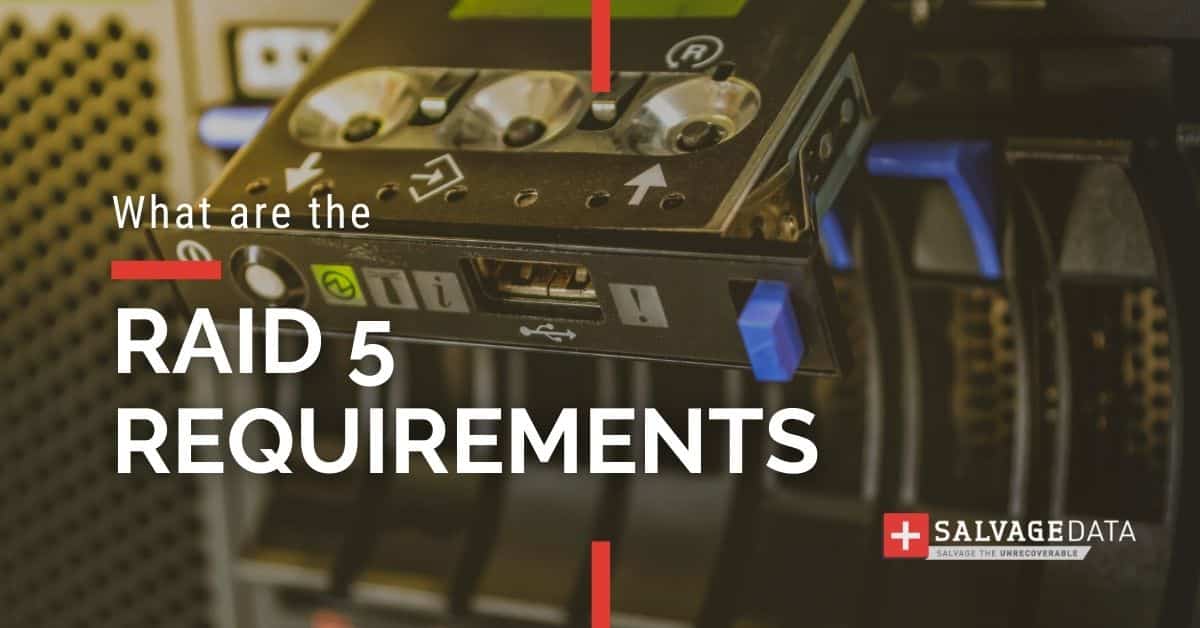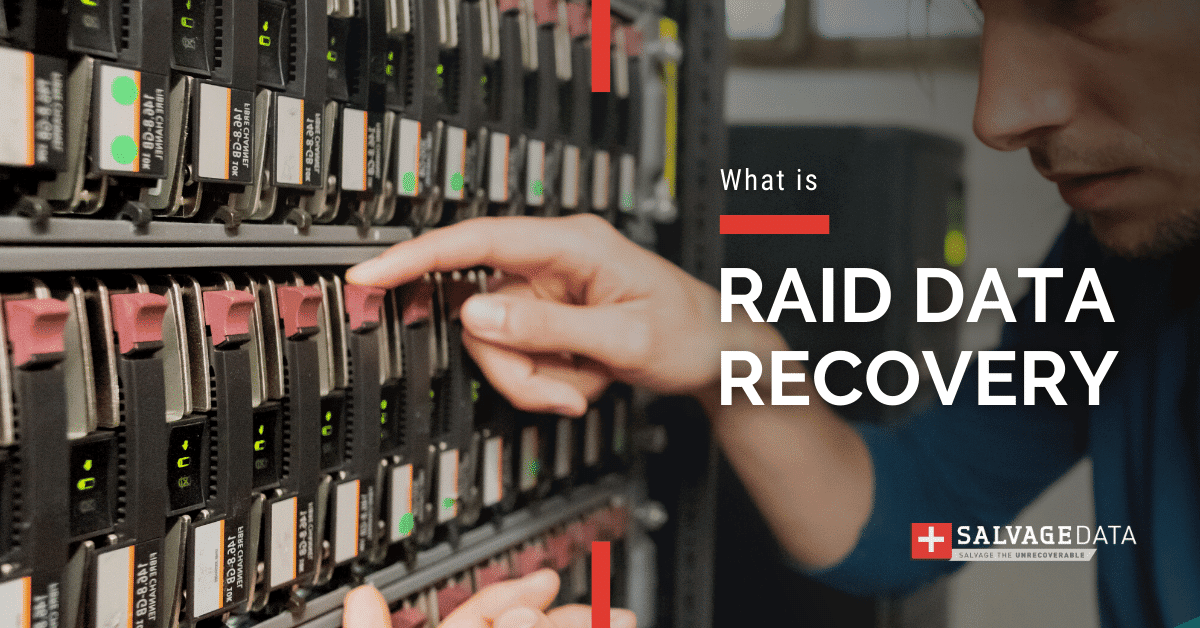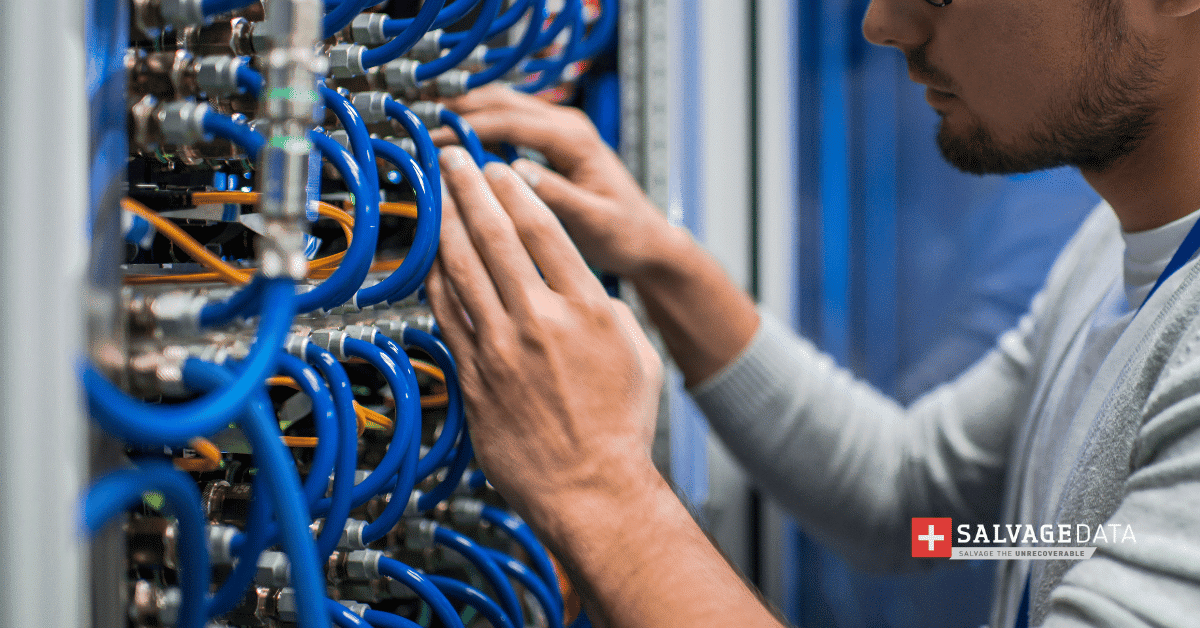Recent Articles
How To Recover Overwritten Files
The Snowflake Data Breach: A Comprehensive Overview
Mac Not Recognizing External Hard Drive: Quick Fix Solutions
How Multi-Cloud Backup Solutions Can Prevent Data Disasters
Capibara Ransomware: What is it & How to Remove
What Should a Company Do After a Data Breach: The Ticketmaster Incident
Secles Ransomware: Removal Guide
What To Do When Your Chromebook Freezes
How to Create Hyper-V Backup
What Is The Best Data Recovery Software For PC

I think there's an issue with my storage device, but I'm not sure Start a free evaluation →
I need help getting my data back right now Call now (800) 972-3282
RAID 5, or Redundant Array of Independent Disks 5, is a data storage configuration. It employs blocks with parity information spread across multiple disks. Each RAID configuration has its specifics. RAID 5 requirements include the minimum amount of disks on the array and how to set up the array.
This type of configuration allows you to store the same information on multiple drives. Which can be incredibly useful if one drive fails. Despite this advantage, there are minimum requirements that you must meet for a RAID 5 setup to function properly.
Top Summary: The RAID 5 configuration is very useful for businesses to set up a secure place for data storage. Its fault tolerance attracts more users, with the addition that the configuration makes it easy for data recovery. But, you must meet RAID 5 requirements to make the most of it.
RAID 5 requirements
RAID 5 has minimum requirements to function as any other device. From the number of drives to each drive particularly. Knowing which are these requirements can help you use your array without waste of space or investments.
RAID 5 minimum number of drives: minimum 3 disks.
Storage capacity: only as much as the smallest drive.
RAID 5 fault tolerance: One drive failure.
Speed: faster read speeds, but slow write performance.
RAID 5 minimum number of physical drives
The first requirement when setting up a RAID 5 system is having at least three drives.
The maximum number of disks on this array configuration is sixteen.
In RAID 5 data is striped across multiple hard drives to improve performance through simultaneous access.
Having over the minimum number of drives may improve performance depending on what other hardware you have available. However, each drive must provide an equal amount of space. We discuss these RAID 5 requirements with the next topic.
Keep in mind that RAID 5 configurations lose the storage capacity on one of the connected drives. So, if you’re using the minimum amount of drives, each one with 1TB, you will not have 3TB for storage. Your usable disk space is actually 2TB in this example.
Therefore, the more disk you have, the more usable storage space you get.
Important: Always keep at least one spare disk in case of disk failure to avoid data loss. In RAID 5 you’ll need a minimum of 4 disks, where the fourth is the spare disk.
How many drives are in the RAID 5 configuration
RAID 5 requires a minimum of 3 disks and a maximum of 16 disks.
To calculate the amount of space you need on RAID 5 configuration you’ll need to consider that the raw storage disk space is not the same as the one listed on the drive. Once you set up the array, 5% to 10% of the disk space goes to the setup, not being usable space.
You can decrease 15% of the total amount, to have a margin of error, or you can use a RAID calculator.
Proper storage capacity
The most important thing to understand about storage capacity on RAID 5 is that all drives must have identical disk space. It can be only three disks or sixteen, they all have to be identical because of the RAID 5 requirements configuration.
If you have all disks with 1TB but one is 500GB, they all will operate as the smaller one, meaning, as if they are only 500GB. So all it takes is one small disk to make you waste storage space and investment.
RAID 5 fault tolerance
One of the main reasons that RAID 5 is so popular with data centers and large-scale computer systems is that it allows for an extremely high level of fault tolerance.
Even so, you can always use good tips to keep your RAID array protected.
When one disk fails, you still have all the other disks to rely on so there is no loss of information unless two or more drives fail at the same time. With many other types of RAID configurations, this would cause permanent corruption or loss of data, but with RAID 5 you can easily replace the failed drive without having to worry about losing any important information.
The number of connected drives on the RAID 5 array impacts its fault tolerance.
Important: If a disk on the array fails, you must replace it immediately. Otherwise, you’ll damage your entire array.
RAID 5 speed
Because of these exceptional levels of redundancy, the write speeds are much slower compared to standard single hard drives or even other RAID configurations. This is because the parity information is written to all the drives in the array, which takes a lot of time to complete.
In most cases, this decrease in speed is worth the increased reliability. But if you are working with mission-critical data that requires high read/write speeds, then consider a different RAID configuration.
RAID 5 speed is great if you only need speed when accessing the files since its read speed is increased according to the disks you’re using.
Learn more about different disks you can use on your RAID 5 array and decide whether to use SSD or HDD to build your RAID – or if you want to combine SSD and HDD for your RAID.
Hardware controller
RAID 5 hardware controllers are physical chips you add to the motherboard. Although you can build the RAID 5 from software or hardware, this configuration works better with a hardware RAID. These controllers calculate parity across the disks before writing to them, optimizing disk space. They also add disk cache, improving disk performance.
RAID 5 compared with other RAID configurations
There are several RAID configurations you can apply to your business. Choosing the right one depends on your goal. You can decide between software or hardware RAID since you can build each configuration from it.
RAID 5 vs RAID 10
RAID 10 configuration combines the RAID 1 with the RAID 0 system. It’s a reliable configuration with high performance. While in RAID 5 you can lose data if two or more disks fail, with RAID 10 the system and the data remain their integrity.
RAID 5 vs RAID 6
Both RAID 5 and RAID 6 are very similar in technology as they use disk striping and parity to increase data security.
RAID 6, however, offers double parity, providing double faulty tolerance and improved performance compared with the RAID 5 configuration. On the other hand, RAID 6 also costs more.
TL;DR: RAID 5 is an excellent option for those who need high levels of redundancy and aren’t too worried about decreased write speeds. As long as you have at least three drives connected and they are all equal in size, you should be able to set up a RAID 5 system with no problems. Just keep in mind that if one drive fails, then you will need to replace it as soon as possible to maintain optimal performance, data loss prevention, and reliability.
Contact SalvageData experts for a free evaluation of your RAID and check the possibility of remote data recovery.













